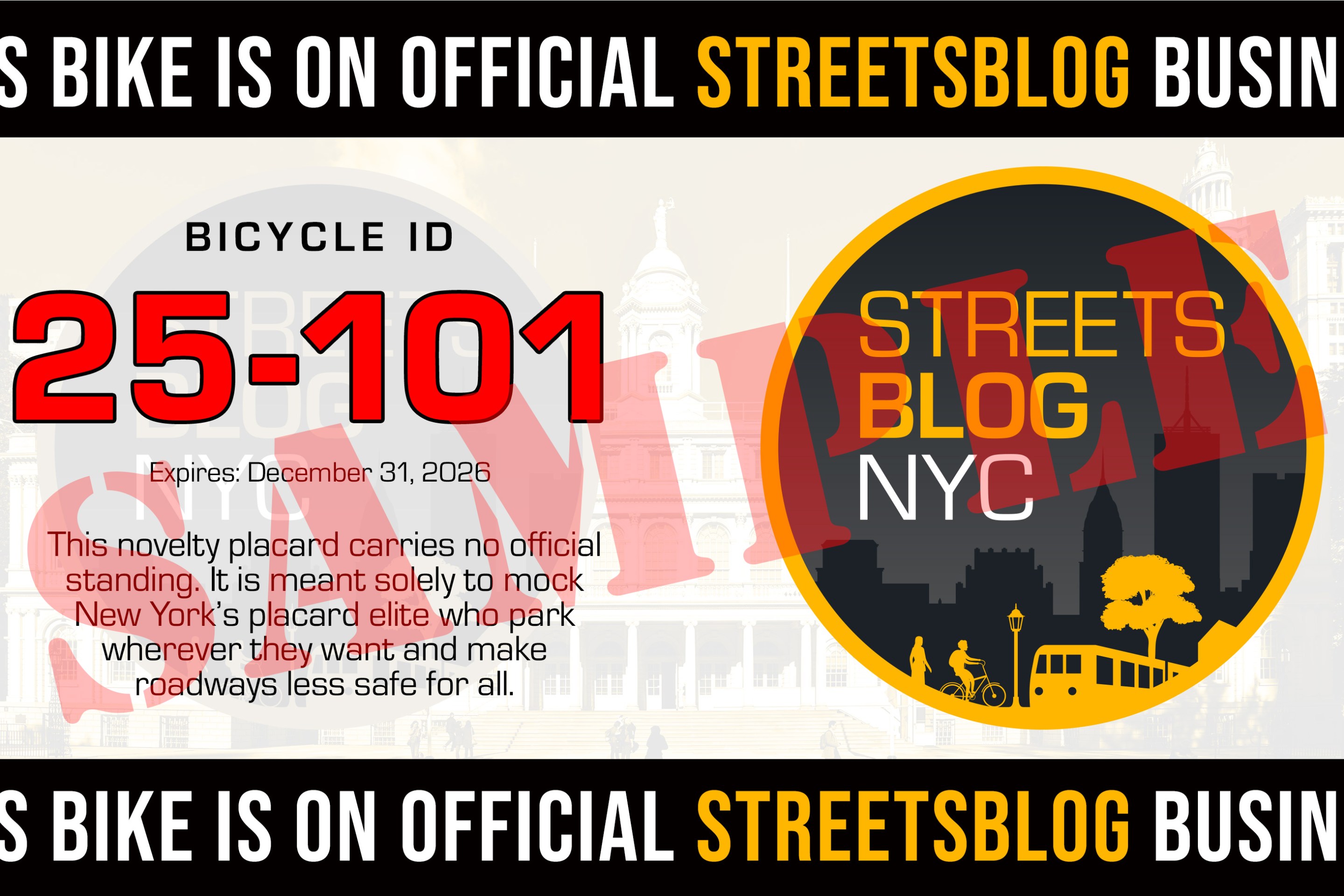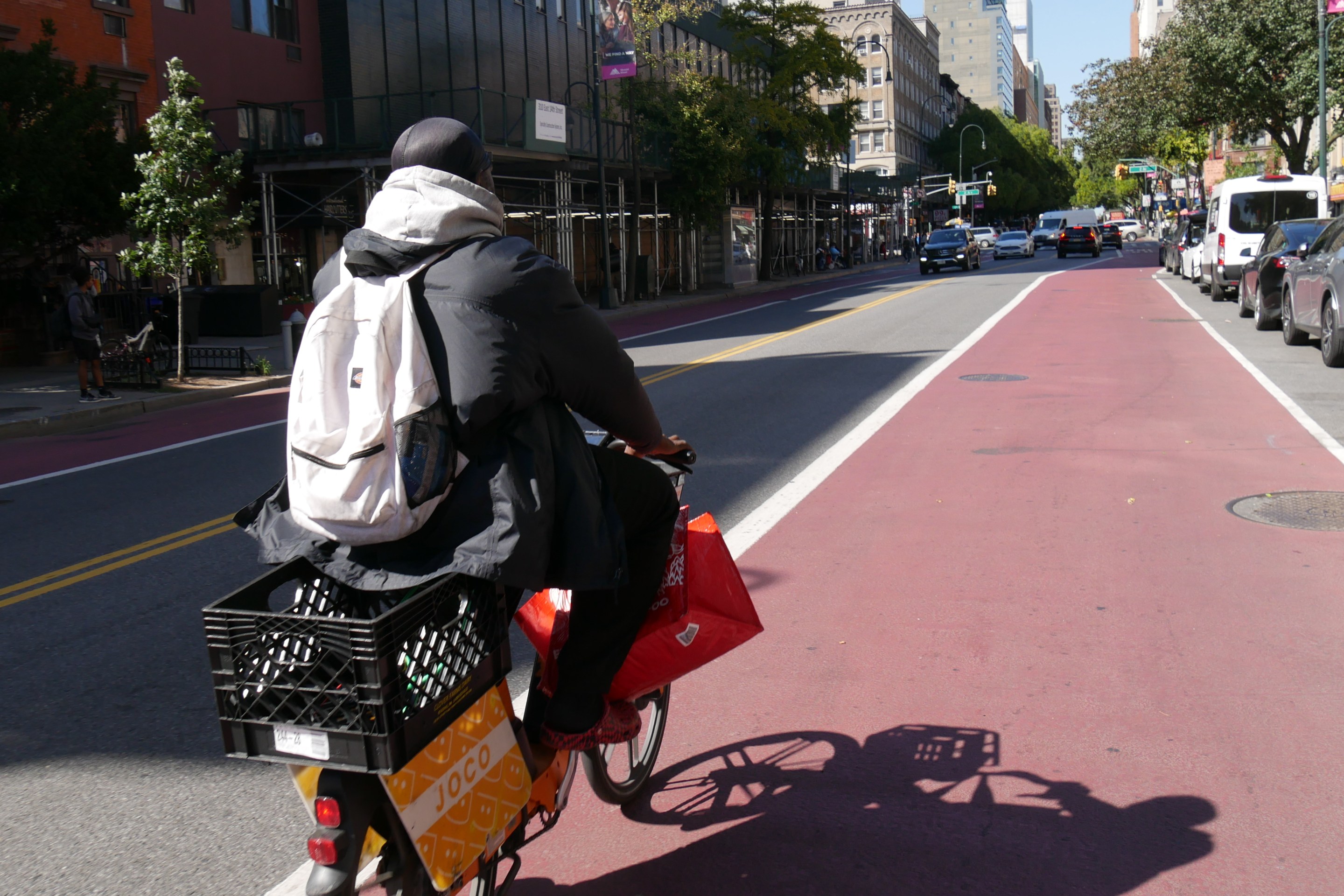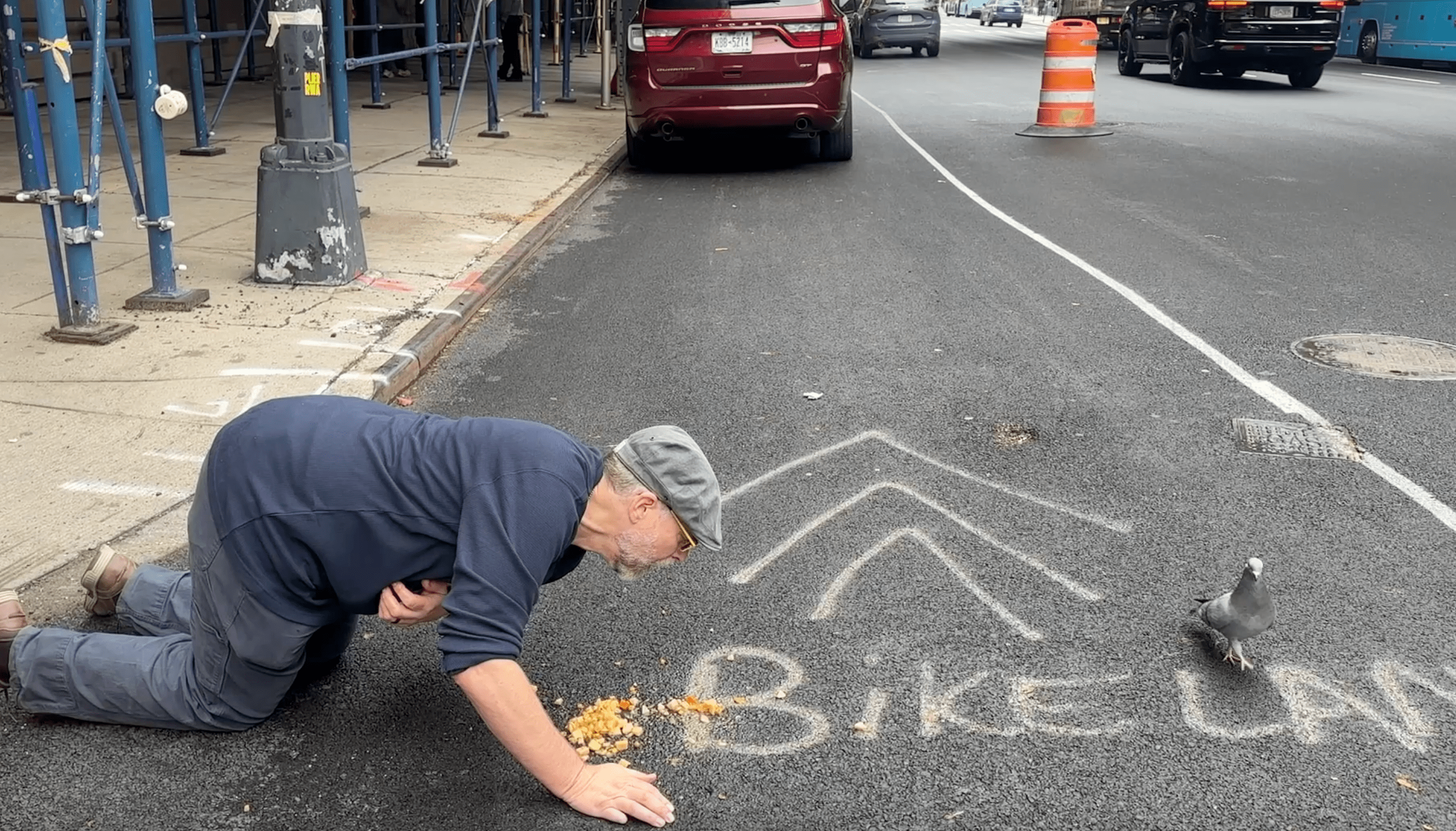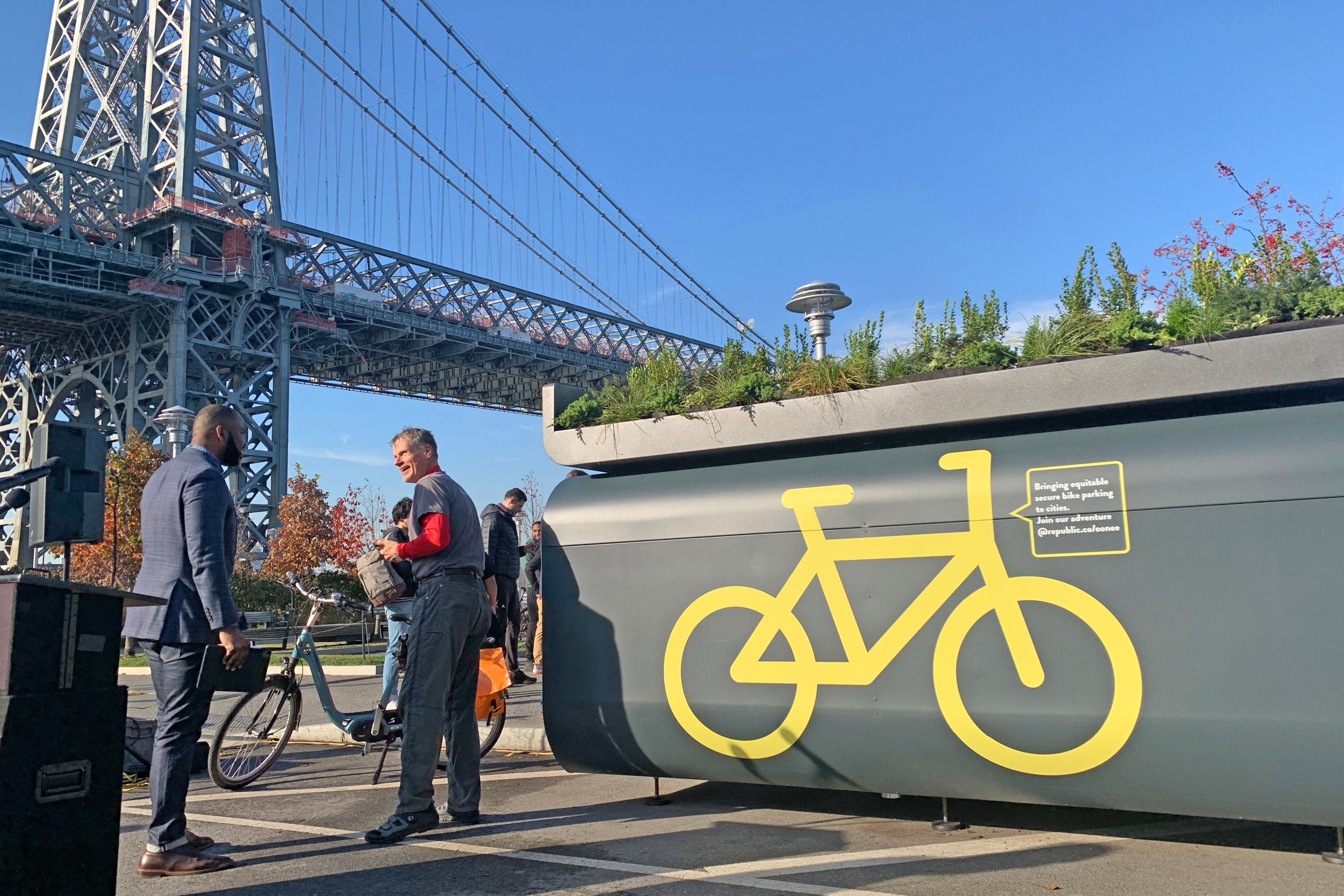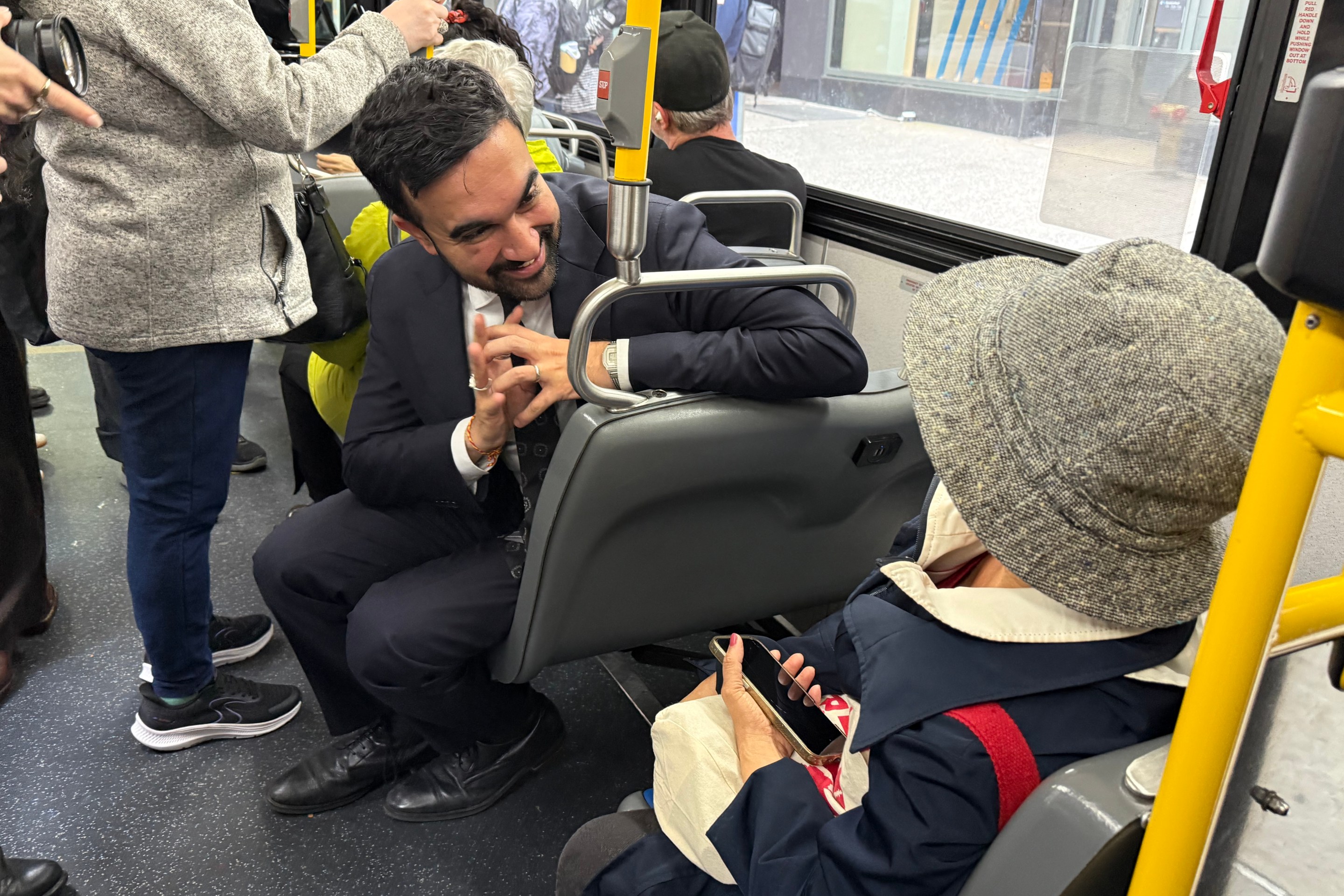The city's failure to replace pandemic-era funds that bolstered the open streets program has led the sponsor of one of the city's most popular car-free dining zones to call it quits and another one to nearly halve the operating hours.
In Park Slope, the Fifth Avenue Business Improvement District, has pulled out of the program, which booted cars from 16 blocks on spring and summer Saturdays for four years, due to a lack of cash to make it happen, BID Executive Director Joanna Tallantire told Streetsblog.
"We've been running a thriving program for four years. The funding, a big chunk of it came from the city with [pandemic] recovery money that we got as a grant. And then we had [Department of Transportation] money, and we also raised money," Tallantire said. "All those pots of money have gradually dried up, so we don't actually have any money to do the program this year."
The DOT said that just because the BID has bailed out doesn't mean that the open street is completely done for. Agency spokesman Vin Barone said the city expects to find a new partner.
On nearby Vanderbilt Avenue, meanwhile, the open street south of Atlantic Avenue will now run five months, from May through September, which is down from the third-weekend-April-through-October format of past years, organizers said.
The open street will also have reduced hours on Sundays, from 11 a.m. to 5 p.m. compared to noon to 10 p.m. in previous years. The combined changes amount to 40 percent fewer operating hours, according to the Prospect Heights Neighborhood Development Council, the organization that manages the open street. (The DOT declined to comment on the specific cuts on Vanderbilt.)
PHNDC similarly attributed to rollback to less and less support from the city.
"In any year we've run open streets, the funding that we get from DOT is only a fraction of what's necessary to run something like Vanderbilt Avenue," PHNDC Executive Director Gib Veconi said. "In 2022 and 2023, we and other full closure open streets received grants from the Department of Small Business Services that were substantial, more than we get from DOT."

"Those were tied to the American Recovery Plan Act, and those funds have been exhausted. SBS is not continuing with that program, they no longer offer [grants to] Open Street sponsors who do full closure streets like Vanderbilt Avenue."
As the Fifth Avenue open street grew, the BID needed to pay more workers to manage the space, Tallantire explained. Planning and running the open street for even one day a week was essentially her second job in addition to running the BID, she said. The organization paid ten people every Saturday to work shifts managing traffic and arranging barricades along the strip.
For the open street season in 2022, the Tallantire's BID had to raise $30,000 on its own to keep the car-free programing going. Last year, the organization needed to raise $40,000, which Tallantire said covered between 50 percent and 70 percent of the open street's costs. At this point though, between the BID's own capacity and a lack of funding from the Department of Transportation and other city sources, the BID decided to throw in the towel.
"We're not managing that program this year," Tallantire said. "It's a great program. It's a great idea. I've loved it. But it's had its day for us."
New York City faces tough budgetary decisions around several programs previously backed by federal relief money is not a new story, fueling the Adams administration's decision to cut back on universal "3K" pre-school. Like with universal 3-K, as the city's larger open streets faces a funding gap, into that open void has stepped ... no one, according to Veconi.
"This was something that DOT was aware was going to be expiring, but nothing else came to replace it. So faced with a significant loss in the city-funded part of our program, we really didn't have a choice other than to limit the season," he said.
If organizers in neighborhoods as wealthy and well-resourced as Prospect Heights and Park Slope can't hire the people or buy the equipment to make the full block closures work, the city will struggle to see the program work anywhere, Veconi said — even as the Adams administration has played up the economic benefits of the car-free stretches.
"If the city expects other communities to be able to launch something like a Vanderbilt Avenue, they're they're going to have to come up with new solutions that are fully funded, and to help people do it," Veconi told Streetsblog.
"You just don't see many other organizations that aren't business improvement districts launch new full closure streets, that just doesn't happen very much."
The methods and tools used stand up the program on the longer closures like Vanderbilt Avenue haven't significantly changed since its launch in 2020, which has kept the costs of running the program high. The standard approach still relies on individuals to manage intersections and ensure that barricades aren't moved or stolen or otherwise messed with — the kind of work that people have been assaulted for doing at other open streets.
The city must do more to the streets themselves so that community organizations aren't left to hire traffic marshals every season, Veconi said.
"We're hoping that someday we'll see other kinds of gateways that are more efficient than using French barriers and safer and easier to operate when it's time to begin the open street," he said. "But we don't know when that's going to happen.
"What you need to do from a design point of point of view is just much, much more intensive."
The city plans to rework Vanderbilt Avenue in its larger work to make Grand Army Plaza more pedestrian and bike-friendly, but not every block has the street geography to make for a good total redesign.
Even if something like that wouldn't work on narrower Fifth Avenue, Tallantire had praise for the program, as city data shows the open street corridor had a 26 percent increase in taxable sales compared to pre-COVID numbers, which also outpaced the Brooklyn average of 6-percent growth. She said she hopes that the city can come up with another way to allow for more interesting uses of the street than just moving and storing cars.
"It's been amazing for us, we've saved businesses with the program. And it was a great thing to run in the pandemic," she said.
Unrelated to the future of the open streets in question, the DOT says it has also expanded its Public Space Equity Program, which currently provides "maintenance, horticultural care, and technical assistance resources" to public spaces in under-resourced areas. Streetsblog covered the program's expansion last year. That program covers 30 plazas. The agency says it will expand to 100. We've asked for a list.

